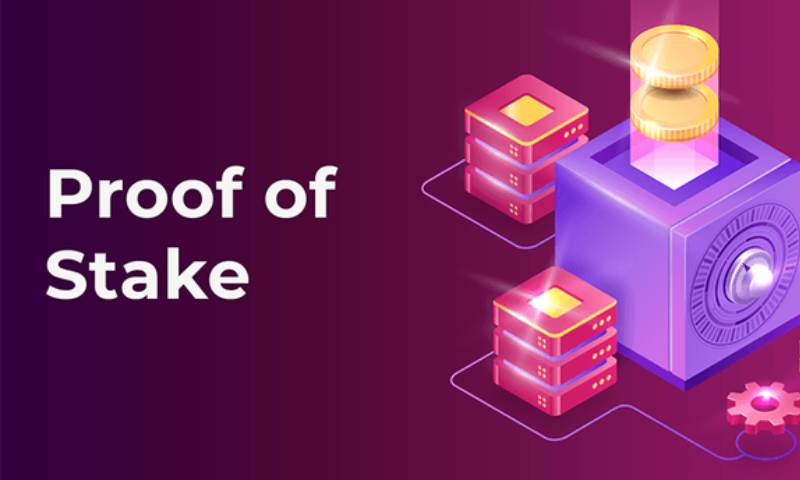The buzz on Security of Proof of Stake (PoS) has many investors on edge. Can you trust your crypto assets are safe with this tech? I cut through the jargon to show you the nuts and bolts of PoS security. You’ll learn how it holds up against hacks, common weak spots, and how to keep your stakes sealed tight. Stick with me; it’s time you got the lowdown on keeping your investment locked down.
Understanding the Proof of Stake Protocol and its Security Framework
The Architecture of PoS Consensus Mechanisms
Proof of Stake (PoS) changes how blocks are made. Instead of miners cracking puzzles, as they do under Proof of Work (PoW), PoS has users ‘staking’ their coins to get the right to create blocks and earn rewards. It’s like a lottery where your ticket count depends on how many coins you lock up – your stake.
This system doesn’t need much electricity, which is great for the planet. It also lets more people take part. To make sure it’s secure, though, we need good planning to stop people from messing with the system.
Common Vulnerabilities and Security Measures in PoS
The safety of your crypto in PoS boils down to how well we handle its weak spots. “Nothing at stake” is one big issue. It’s when stakers have nothing to lose from supporting multiple blockchain versions. This can cause real confusion and mess up the transaction record.
To prevent this, PoS designers create ‘slashing conditions’. These rules punish stakers who act against the network’s interests, like those trying to rewrite history. Yes, even in blockchains, rewriting history is a big no-no!
Other risks like ‘long-range attacks’ or the scary ‘51% attack’ are also a concern. In a long-range attack, someone may try to make a secret blockchain branch from way back and replace the real one. And a ‘51% attack’ is when someone gets more than half the network’s power, giving them too much control.
We work hard to avoid these attacks. Validators are like blockchain guardians. They check transactions and keep things safe, but they must also be safe from harm. So they follow the best practices. This means keeping their software updated and their connections secure, away from would-be attackers. Validator security is top-notch when done right.
To make things even safer, we often use complex math – cryptographic principles – to lock down the system even tighter. These make sure that every block is legit and hasn’t been fiddled with.
And to stop just a few folks from getting all the power (which we call ‘centralization’), we sometimes use multi-signature setups. This means a block only gets the green light when several validators give the thumbs up.
But how do we know everyone is playing fair? Simple – audits! Regular PoS protocol audits check to see that the system works right and everybody follows the rules. And we have to think about staking pools too. They’re like a group of stakers pooling their coins to increase their chances in the staking lottery.
Lastly, Gaame theory helps us predict the moves of other stakers and plan for them. It’s part of making sure nobody can cheat the system.
In conclusion, your crypto is mostly safe in PoS, but it’s a bit like a castle. Even with strong walls, you need guards, rules, and maybe even a moat to keep the bad guys out. That’s what we do in PoS – build and keep improving our defenses so your crypto castle stays secure.
Key Risks in Delegated Staking and Validator Operations
Addressing the ‘Nothing at Stake’ Problem and Long-Range Attacks
In Proof of Stake systems, validators play a big game. They get to bet on the block they think is most likely to be added to the chain. “Nothing at stake” means they can bet on many blocks with no risk. It’s like betting on every horse in a race; you can’t lose!
But we fix this. We make it cost something for validators to bet wrong. They can lose their stake, or security deposit, if they’re caught playing unfair. This is a slashing condition, a rule that says “play nice or pay the price”. Slashing conditions help us trust the system because they keep validators honest.
Long-range attacks are another sneaky move. In these, someone makes a secret chain at home, then one day says, “Surprise! This is the real chain!” and tries to replace the legit one. To stop this, we use checkpoints or vote locking, like freezing a part of the game board. This means validators have to agree on certain points. So, a sneaky new chain won’t work if it doesn’t match up with the agreed history.
Best Practices for Validator Security and Slashing Conditions
Now, let’s talk about keeping things safe as a validator. Rule one: Stay updated. Just like you wouldn’t use an old leaky boat, don’t use outdated software. Hackers love old stuff they can poke holes through.
Rule two: Keep your keys safe, like pirate treasure. They are the map to your staking gold. Use things like hardware wallets or multi-signature wallets. These are like safes that need multiple keys to open. That’s better than one key that could get lost or stolen.
Next, be smart with your server. If you’re running your own, guard it. Like a castle, it should have layers of walls. Firewalls, anti-malware, the works. And always be ready to spot an intruder.
Keep a close watch on slashing conditions. Remember, these are the rules of the game. You break them, you pay, no matter if it’s an accident or on purpose. An example of a slashing condition is double signing. That’s when a validator votes for two different blocks at the same time. It’s like saying “I’m at two places at once!”. We know that’s not right, so they get a penalty.
Lastly, always be checking. PoS protocol audits are like health checks for the system. They find weak spots before they become big problems.
By sticking to these best practices, you’re not just protecting yourself. You’re keeping the entire network strong. You see, in PoS, it’s like a team sport – we all need to do our part to win.
Enhancing PoS Network Resilience through Advanced Cryptography
Application of Byzantine Fault Tolerance in PoS Systems
PoS systems might break if some parts fail or act shady. Byzantine Fault Tolerance, or BFT, helps a lot here. BFT is like a team that still wins even if some players cheat or mess up. In PoS, it keeps the system running smooth and fair. Validators, the players here, have to prove themselves before joining the game.
Small bad acts get caught quick with BFT. Imagine someone playing a game and breaking the rules. Others will notice and stop the game. In PoS, BFT does this by having checks in place. If one part lies, the others won’t agree, and the system stays safe.
Use of Cryptographic Principles to Prevent 51% and Stake Grinding Attacks
In PoS, a 51% attack is like a team owning most of the game. They could change things in their favor. But, cryptography helps stop this. It uses complex math to lock up the game rules. Nobody can twist these rules without the right math key.
Stake grinding attacks are tricks where someone makes lots of guesses to win more in the game. To stop this, PoS networks use random numbers that can’t be guessed. It’s like a raffle where you can’t cheat to get more tickets.
Validators keep things in order. They follow rules to be part of this. To join, they put up money, like a promise to play fair in the game. If they break the rules, they lose their money.
PoS needs these to stay tough against attacks. Every validator plays a role. They help make sure the system can spot a fake move. Through practice, PoS networks learn to stop cheats. Keeping your crypto safe is like a team sport. Everyone must play by the rules and watch out for each other.
Security in the PoS world is no small feat. But with advanced cryptography and eagle-eyed validators, your crypto investment stands on solid ground, prepared to face whatever comes its way in the ever-shifting landscape of blockchain technology.
Mitigating Centralization and Enhancing Decentralized Security
Strategies Against Validator Collusion and Sybil Attacks
Let’s talk about keeping Proof of Stake (PoS) safe. What’s a big risk in PoS? It’s when validators team up in harmful ways. We call this “validator collusion”, and it’s a real problem. We also worry about Sybil attacks. That’s when someone pretends to be many users to fool the system. So, how do we stop these bad acts?
We fight back with smart strategies. First, we’re always watching for odd behavior to spot cheaters. We also mix things up, so it’s harder for validators to control things. They have to behave well or they lose their stake. That’s the money they put down to become validators.
Rules called slashing conditions can take their stake if they break the rules. This scares off bad actors. Plus, we have tricks up our sleeves like multi-signature protocols. These require more than one person to OK big decisions. This way, one bad apple can’t spoil the bunch.
Economic Models that Incentivize Appropriate Behavior in Staking Pools
Money talks, right? We use economic models to encourage the right moves in staking pools. If validators do their job well, they get a reward. If they try to mess up the network, they lose money. It’s pretty simple: do good, get paid; do bad, say goodbye to your cash.
This carrot-and-stick approach keeps validators in line. It’s not just about penalties. We shine a light on those who do great work. We show the world who the best validators are. This earns them more trust, and more trust means more people choose them for staking. It’s a win-win. The honest ones get more to stake, and everyone’s crypto is safer.
Let’s not forget about audits. We don’t just take a validator’s word for it. We have experts dig in and check PoS protocols from top to bottom. Think of it like a health check-up but for blockchain security. These audits find weak spots before they become big headaches.
Security isn’t just tech stuff; it’s about people too. It takes a village to keep a PoS network strong and fair. Validators, developers, stakers – we all have to work together. Trust is the name of the game, and we’re here to build it, block by block.
Keeping your crypto safe is our top priority. With these strategies, we’re building a fortress around your investment. Stay informed and stay safe.
We’ve dived deep into the Proof of Stake protocol’s inner workings. We looked at how PoS designs its consensus, where the security gaps are, and how it deals with threats. We also discussed how staking and validator operations carry their own risks, like the ‘Nothing at Stake’ issue, but there are steps we can take to stay safe. Then we went over how newer crypto tricks make PoS networks stronger against major attacks, mixing in some tough math to keep the system fair and random. Lastly, we explored ways to keep the playing field even and honest, tackling the big problem of too much control in too few hands.
My final thought? PoS isn’t perfect, but it’s smart. With the right tweaks, it’s a solid foundation we can trust. It’s got challenges, sure, but also a toolbox full of fixes for those ready to use them. Keep your eyes peeled, stay informed, and we’ll make PoS work not just well, but great for everyone involved.
Q&A :
What is Proof of Stake (PoS) and how does it ensure security?
Proof of Stake (PoS) is a consensus mechanism used by blockchain networks to achieve distributed consensus. Rather than relying on intense computational work to validate transactions and create new blocks like Proof of Work (PoW), PoS secures the network through the ownership, or “staking,” of the native cryptocurrency. Validators are chosen to create new blocks based on the amount of cryptocurrency they hold and are willing to “lock up” as stake. Security in PoS is ensured because validators have a financial incentive to act honestly; malicious behavior would devalue the currency they hold, effectively penalizing their own wealth.
How does the security of PoS compare with PoW?
The security comparison between Proof of Stake (PoS) and Proof of Work (PoW) involves various factors. PoW’s security is largely derived from its high energy and computational cost, which makes it exceedingly expensive and difficult to carry out a 51% attack. On the other hand, PoS secures the network by aligning validators’ financial incentives with the wellbeing of the network since they stake their own cryptocurrency. PoS is also considered to be more resistant to centralization since acquiring a majority of coins is often more difficult and conspicuous than obtaining computational power. Both systems have their strengths and weaknesses, but PoS is generally seen as an energy-efficient alternative with a different, yet effective, security paradigm.
Can Proof of Stake prevent 51% attacks?
Proof of Stake is designed to mitigate the risk of a 51% attack by making it economically disadvantageous for a validator or group of validators to attempt such an attack. In a PoS system, to conduct a 51% attack, the malicious party would need to own the majority of the staked coins, which would typically require significant investment. Additionally, attempting to attack the network would likely diminish the value of the stake, making such an attack counterintuitive. Although no system is entirely immune to attack, PoS’s economic stake-based deterrents add a formidable layer of security.
What happens if a validator tries to attack the network in PoS?
In a Proof of Stake system, if a validator acts maliciously by attempting to attack the network or approve fraudulent transactions, several consequences can serve as substantial deterrents. Validators have a stake in the network, and if they are caught violating the network’s rules, they can be punished through a process called slashing. Slashing means the validator’s stake can be partially or entirely taken away. This loss of stake represents a direct financial penalty and disincentivizes validators from acting against the network’s interests, thereby helping to maintain the security and integrity of the Proof of Stake system.
Are there any known vulnerabilities in Proof of Stake protocols?
All blockchain consensus mechanisms, including Proof of Stake protocols, can have potential vulnerabilities that need to be carefully managed. Some known challenges in PoS include the “nothing at stake” problem, where validators could find it cost-free to support multiple blockchain histories, potentially leading to network instability. Another concern is the “long-range attack,” where an attacker could attempt to create an alternate chain from a point far back in time if they acquire old private keys. Despite these concerns, PoS protocols are continuously evolving, with developers implementing various techniques such as checkpointing, penalizing equivocation, and enhancing protocol designs to mitigate these vulnerabilities and enhance security.


